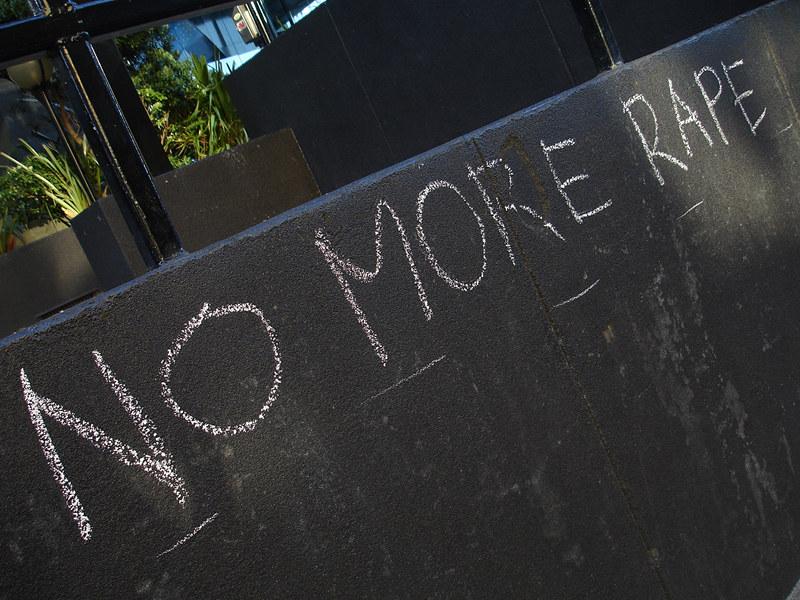The Ugly Face of Vigilantism in Delhi

Representational image. | Image Courtesy: flickr
There cannot be a worse reminder of the gruesome reality of India’s women than what its Capital witnessed on its 73rd Republic Day. According to many news reports from yesterday and today, a 21-year old woman was abducted by at least 11 members of a family – including women and minor boys – in her neighbourhood, locked in a room where she was gang-raped in front of women, who later chopped her hair off, blackened her face, put a garland of footwear around her neck, and paraded her in the lanes near their house, in broad day light. The accused, say the reports, also filmed the criminal acts on their cellphones. That all this happened for nearly an hour, barely 50 metres from the local police booth in east Delhi’s Kasturba Nagar that was unmanned at that time, should make every Indian hang their heads in shame.
According to the police, the motive for the crime was personal enmity: the family held the woman – who is married with a child – responsible for the death by suicide of one of their kin, a 16-year old boy whose advances were allegedly rebuffed by the woman. That the police arrived in time to rescue the woman from the gang before it could subject her to further humiliation, is hardly a consolation. The police are at a loss to explain why immediate action was not taken to provide her and her family security, when a written complaint was lodged with it about threats from the boy’s family. The woman had even shifted her residence, unable to tolerate the harassment and to avoid possible physical harm to her and her family from the boy’s family members. But the boy’s family found her new address, and abducted her to take revenge.
It is difficult to dismiss the incident as an aberration, as a big city like Delhi has never reported a similar one earlier. It does not also make sense to attribute this to anomie – a situation characterised by the breakdown of social norms and values caused by a people who are uprooted and known for their deviant behaviour. The police claim that the majority of the arrested and absconding suspects are involved in illegal sale of liquor, and have previously been booked in the past under the Excise Act. If so, the police has to explain why it didn’t take timely action to provide the female victim the required security, when it received her formal written complaint against the boy’s family.
The Shahdara district police has apparently registered a case under 12 different sections of the Indian Penal Code. These include gang rape, abduction, molestation, physical assault, wrongful confinement and criminal conspiracy. Nine people have been caught, including seven women and two minors, so far. The police have identified 10-15 additional people on the basis of CCTV footage and mobile video clips, and have constituted five teams to apprehend the rest of the accused. Obviously, the police should not shirk departmental action against dereliction of duty by its own personnel in providing adequate security to the woman survivor and her family.
There will of course be vociferous appeals from the civil society to ensure stringent action against the guilty, a speedy trial, their conviction and punishment. That the boy’s family, blinded by their affection for the boy, considered revenge as a form of expression of their anger can be no ground to mitigate the gravity of their offence. The onlookers who chose to look the other way, when they could have intervened to protect the woman from humiliation and sexual violence, are an eloquent testimony to the helplessness of the civil society.
When individuals and groups seek vengeance, it underlines the failure of the law to be functional and effective. To many who are aghast that such a thing can happen in a city like Delhi, the answer can only be found in how the State withered away during the Delhi riots of 2020, in many pockets of the city, where it took a collective toll of 53 lives, while destroying several more. The question remains whether the State has left an opening for other kinds of privately administered, vigilante forms of punishment of those perceived as guilty, by its selective inaction during the riots.
The Republic Day incident in Delhi reminds us of another facet of the contemporary vigilantism. The lynchings against members of minority communities, for instance, by vigilante groups were sought to be justified on the ground that the victims allegedly violated the law against beef, or against child molestation, or kidnapping, among other things. But the R-Day incident tells us that it need not always be the case.
The perpetrators of vigilante justice are not even bothered whether their victim might have violated a law or could be innocent of any crime. Such rationalisations do not matter to them. The violence which they unleashed on their victim on Wednesday demonstrates their confidence that their acts can have a chilling effect on the silent onlookers, and deter them from interference to save the victim.
Vigilantism in any society is explained as a popular response to the vacuum left by State collapse, failure and disorder. But Wednesday’s incident may make many of us ask the uncomfortable question whether we are seeing the ugly manifestation of female vigilantism as a separate category in itself, caused by the experiences of women as women, who are unequal to men.
The union government’s proposal to increase the marital age of women from 18 to 21 – unmindful of the inequality between the two sexes in India, as pointed out by women’s rights lawyer Flavia Agnes to The Leaflet – and the reluctance on the part of a section of the judiciary to recognise the concerns over marital rape and the plea to criminalise it may well widen this inequality, perhaps further fuelling female vigilantism in unforeseen dimensions.
Much has been written about the notorious Khap panchayats, and how they encourage the commission of honour crimes in rural India. Wednesday’s incident in Delhi could be an indication that rather than khap panchayats, we may have “parivar panchayats”, which decide whether a woman or her family is entitled to their dignity and self-respect, in view of what they consider as their “abetment” to a crime. This has ominous portents, as in “parivar panchayats” the distinction between the two sexes is blurred, with women actively encouraging the male members of their families to commit sexual crimes on other women as an act of revenge and humiliation. Henceforth, therefore, schemes for protection of women considered vulnerable to sexual attacks and victimisation, must deal with threats from hostile neighbourhoods in cities, and earmark safe houses (which now have to be mandatorily provided, for instance, for the safety of runaway couples who face threats for allegedly violating family honour) to ensure their security.
Wednesday’s horrific incident in the Capital also points to the reality of stereotypes and their worrisome role in shaping perceptions of common people. It is forgotten, especially by the perpetrators of the crime in this case, that the victim of the incident – a married woman with a child, and six years older than the boy who committed suicide after she spurned his advances – has the right to her bodily integrity. Instead, the difference regarding how girls and boys should behave and what they can and cannot do is socially constructed and created, based on what is perceived as acceptable or unacceptable in different contexts.
Courts have recognised that the State owes survivors of sexual violence a duty of care and protection. The objective is to make the legal system sensitive to the needs of the victim. In Dilip vs. State of Madhya Pradesh (2013), the Supreme Court recognised that a victim of sexual assault requires a totally different kind of treatment, not only from the society, but from the State authorities too. The Court commented on the care to be taken by doctors while examining rape survivors, and also the way the investigation should be conducted. In Khem Chand vs. State of Delhi (2008), the Delhi High Court recognised that to effectively rehabilitate the survivor, measures need to be taken from the stage of commission of the crime itself. The court observed that the stakeholders in the criminal justice system need to be sensitized so as to underline “the role each one of them can play to mitigate the rigour of the trial and prevent the erosion and loss of confidence of the victim”.
Hopefully, the trial of the accused in Wednesday’s incident in the Capital will not come in the way of healing the victim’s wounds, even if society cannot possibly adequately compensate her for her loss of dignity and the trauma she suffered.
Get the latest reports & analysis with people's perspective on Protests, movements & deep analytical videos, discussions of the current affairs in your Telegram app. Subscribe to NewsClick's Telegram channel & get Real-Time updates on stories, as they get published on our website.
























